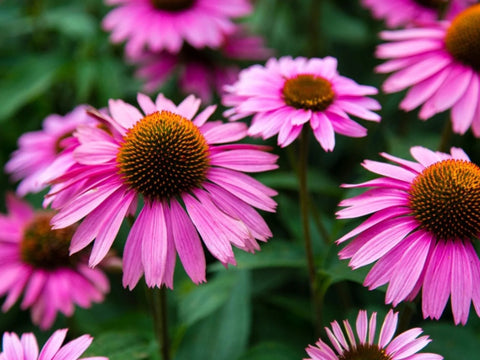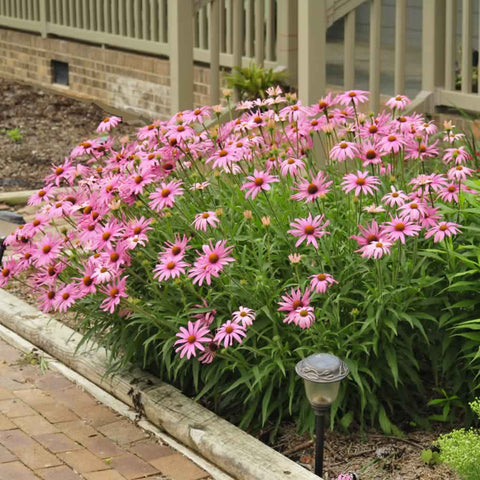

Purple coneflower (Echinacea purpurea) is a perennial wildflower native to North America that has become a favorite among gardeners. Known for its vibrant, daisy-like purple petals and distinctive center, this perennial plant is admired for both its beauty and its medicinal properties. Commonly referred to as echinacea, purple coneflower has a long history of use in traditional medicine, particularly in immune-boosting remedies. But beyond its health benefits, it is also an excellent choice for drawing pollinators and adding color to gardens.
Physical Characteristics of Purple Echinacea
Purple coneflower is easily recognizable thanks to its large, showy flowers. The plant usually grows to a height of 2 to 4 feet and has narrow, lance-shaped leaves with rough, textured surfaces. The flowers themselves feature bright purple to pink petals that surround a large, spiky central cone, which gives the plant its name. These central cones can range in color from greenish-brown to orange and comprise numerous small florets.
The blooms of purple coneflower generally appear from mid-summer to early fall, attracting bees, butterflies, and other pollinators. The plant lives in many different types of soil and its relatively low maintenance make it a favorite in wildflower gardens, prairies, and even flower beds.
Medicinal Uses of Purple Echinacea Coneflower
Purple coneflower has a rich history in herbal medicine, particularly among Native American tribes that used it to help many health problems including infections, wounds, and respiratory issues. The plant has long been touted for its ability to stimulate the immune system, and modern herbalists continue to use it in a variety of ways.
The most commonly used parts of the plant are the roots, flowers, and leaves. Echinacea is thought to enhance the body's natural defenses by increasing the activity of white blood cells, which help fight infection. It is often used as an immune-boosting supplement, particularly during the cold and flu season, with claims that it helps with the harshness and duration of symptoms.
In addition to its immune-enhancing effects, echinacea has been used as a remedy for sore throats, colds, upper respiratory infections, and even skin conditions. Some studies suggest that purple coneflower may help with inflammation and pain, making it a proper herbal remedy for conditions like arthritis or other inflammatory issues.
Some studies support its benefits, while others suggest its effects may be limited. As with any supplement or herbal remedy, make sure to contact a healthcare provider first, especially if you are pregnant, nursing, or have underlying health conditions.
Garden and Ecological Benefits of Purple Echinacea
In addition to its health uses, purple coneflower is a valuable addition to gardens, especially for those looking to attract pollinators. Its bright flowers provide nectar for bees and butterflies, helping to support these important insects. As many pollinators are in decline, planting purple coneflower in your garden can contribute to local biodiversity and support the health of these species.
It lives in full sun and thrives on primarily dry soil, making it a perfect choice for xeriscaping, emphasizing water conservation. Once established, purple coneflower is a relatively low-maintenance plant that requires minimal attention. Its deep taproot helps it survive in dry conditions, and it is resistant to many common pests and diseases.
The plant also plays a role in the health of the soil. Because it is a native species, purple coneflower is adapted to local growing conditions and supports the surrounding ecosystem.
Growing Purple Coneflower
Purple coneflower is an easy-to-grow perennial that adds both beauty and ecological value to any garden. It thrives in full sun but can also live in partial shade. While it can grow in a wide range of soil types, it prefers well-drained soil with a slightly acidic to neutral pH. The plant is quite drought-tolerant once established and can survive on minimal watering.
Purple coneflower is propagated through seeds, which should be started indoors in early spring or directly sown outdoors after the last frost.
One important note for gardeners: purple coneflower can self-seed, so if you don't deadhead the flowers after they bloom, you may find new plants sprouting up the following season. This can be a great way to increase your plant population without purchasing new seeds.
Ships As:
Rooted Plug
Zone:
4-9
Exposure:
Full Sun
Deer Resistant:
Yes
Native:
Yes




